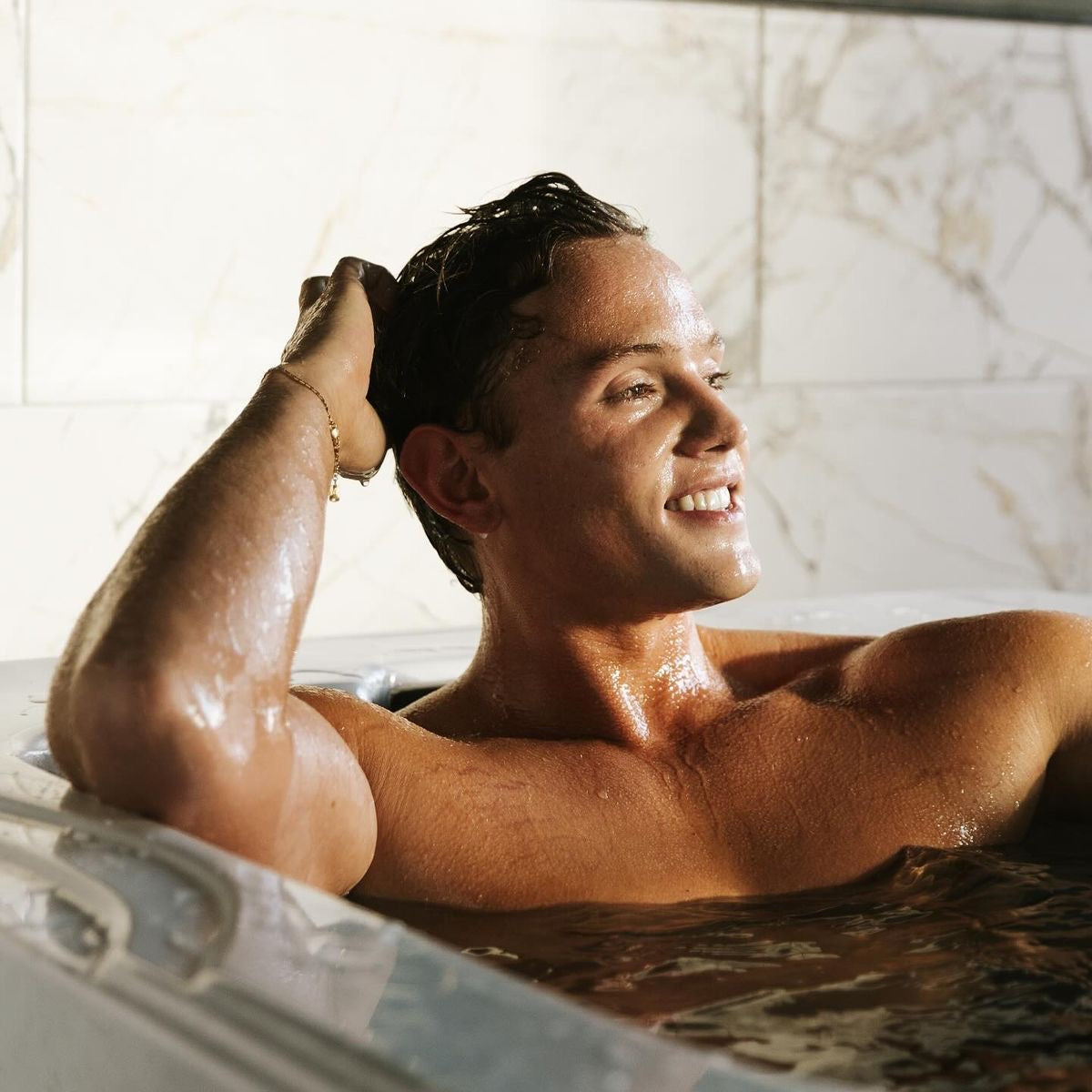Thinking your Ice Bath Tub will turn you into a raging testosterone machine? Short answer: no, Cold Plunge sessions won’t reliably boost testosterone. But before you ditch your Cold Plunge Tub, keep reading to discover what ice baths actually do for your body, recovery, and overall health!

2. The Conflicting Evidence: Do Ice Baths Boost Testosterone?
2.1 Arguments Supporting a Potential Increase
2.1.1 Studies Showing Acute or Consistent Testosterone Elevations
Some small studies suggest brief cold exposure may lead to short-term testosterone increases.
Results are inconsistent across trials.
They often depend on timing, water temperature, and individual variation.
Cold Plunge fans sometimes feel energised after a dip.
But that doesn’t guarantee lasting hormonal change.
2.1.2 Physiological Mechanisms: Luteinising Hormone (LH) and Norepinephrine Influence
Cold immersion can increase norepinephrine release.
This stress hormone might indirectly affect LH, which drives testosterone production.
However, this link is speculative and not well proven.
More research is needed to confirm the pathway.
2.1.3 The Role of Pre-Cooling Before Exercise
Some athletes use cold exposure before workouts.
Pre-cooling may delay fatigue and improve performance.
The idea is better workouts might support healthy testosterone levels indirectly.
But that's not the same as a direct testosterone boost from cold plunges.
2.2 Research Suggesting No Effect or Even a Decrease
2.2.1 Studies Observing Reduced Testosterone or No Significant Change
Many studies show no significant increase in testosterone from ice baths.
Some even observe slight reductions, especially after heavy post-exercise immersion.
Results vary widely.
This inconsistency makes it hard to give clear recommendations.
2.2.2 The Impact of Post-Exercise Cold Immersion on Anabolic Response
Cold water after training can blunt anabolic signalling.
Reduced inflammation is good for recovery but may dampen muscle growth signals.
This might indirectly lower testosterone response to strength training.
Athletes seeking muscle gains often skip immediate post-workout plunges.
2.2.3 The Cortisol Connection: Stress Response and Testosterone Suppression
Cold exposure can increase cortisol.
Cortisol can suppress testosterone if chronically elevated.
While a single plunge isn’t dangerous, frequent long exposures might be counterproductive.
Balancing stress responses is key.
3. Beyond Testosterone: Ice Baths' Impact on Male Hormonal and Sexual Health

3.1 Effects on Libido, Fertility, and Overall Wellness
3.1.1 Indirect Links to Sex Drive and Hormonal Balance
Feeling alert after an ice bath can boost mood.
This may indirectly support sex drive.
But no direct link exists between Cold Plunge sessions and testosterone-driven libido.
Mood enhancement remains a clear benefit.
3.1.2 Testicular Temperature Regulation and Sperm Health (Distinction from Testosterone Levels)
Cold exposure affects testicular temperature.
Brief cooling may help sperm health in certain contexts.
But that’s different from increasing testosterone levels.
Long, extreme cold may even harm reproductive function if overdone.
3.1.3 Stress Reduction, Cortisol Control, and Mental Well-being Benefits
Cold plunges can reduce perceived stress over time.
Controlled exposure helps with mental resilience.
Lower chronic stress may help maintain hormonal balance indirectly.
This is why many enjoy them despite unclear testosterone effects.
4. Navigating the Science: Best Practices and Future Outlook
4.1 Optimising Your Ice Bath Protocol for Hormonal Health
4.1.1 The Importance of Timing: Before vs. After Workouts
Pre-exercise cold exposure might help some athletes.
Post-exercise immersion can blunt strength gains and hormone responses.
Choose timing based on goals.
Personal experimentation is valuable.
4.1.2 Duration, Temperature, and Consistency Considerations
Short, tolerable sessions are safest.
Typical recommendations are 1–3 minutes for beginners.
Advanced users might go 5–10 minutes with caution.
Colder water requires shorter durations.
4.1.3 Acknowledging Individual Variability in Response
Everyone responds differently.
Health conditions, fitness level, and stress tolerance all matter.
Listening to your body is essential.
There’s no universal rule.
4.2 The Current Scientific Landscape and Holistic Approaches
4.2.1 Call for More Definitive Long-Term Research and Clinical Trials
Most studies are small and short-term.
We need long-term trials on cold plunges and testosterone.
Better evidence is required for clear recommendations.
Remain sceptical of bold marketing claims.
4.2.2 Ice Baths as Part of a Broader Lifestyle for Hormonal Balance
Cold plunges support recovery and stress management.
But they shouldn’t be your only strategy for hormonal health.
Combine them with good sleep, nutrition, exercise, and stress reduction.
A balanced approach is best.
Takeaways Table
| Topic | Key Point |
|---|---|
| Testosterone Boost | Not reliably proven |
| Possible Short-Term Increases | Some evidence, but inconsistent |
| Risks | Cold shock, cortisol spikes, blunted anabolic response |
| Other Benefits | Mood, stress reduction, possible sperm health support |
| Best Practices | Short durations, mindful timing, listen to your body |
Conclusion
Ice baths, Cold Plunge Tubs, and Ice Bath Tubs are great for recovery and mental resilience.
But don’t expect them to reliably increase testosterone.
Use them wisely, stay safe, and think about your overall health strategy.
A balanced approach always wins.






